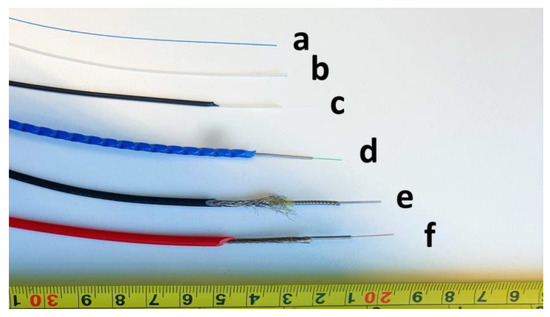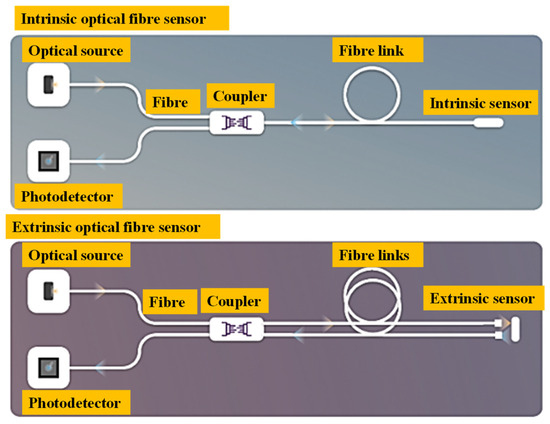Features to Look for in an Optical Fibre Diameter Analyser Device
Features to Look for in an Optical Fibre Diameter Analyser Device
Blog Article
Maximize Your Fiber Optic Performance: Recognizing Optical Fibre Diameter Analyser Innovation
The efficiency of fibre optic systems is seriously influenced by the precision of their diameter, a factor commonly ignored in the quest of ideal signal stability. Understanding the technology behind optical fibre size analysers reveals the intricate balance between dimension precision and production high quality.
Importance of Optical Fibre Diameter
The diameter of optical fiber plays a crucial role in identifying the performance and effectiveness of interaction systems. Conversely, smaller sized diameters tend to support fewer modes, which can enhance signal clearness and decrease crosstalk.

In addition, understanding the size's implications can lead to set you back financial savings by reducing the need for signal boosting and repeaters in extensive networks (optical fibre diameter analyser). Finally, the importance of optical fiber size can not be overstated, as it straight affects the general effectiveness and integrity of contemporary interaction systems

How Size Influences Signal Quality
Signal high quality in optical fiber systems hinges dramatically on the size of the fiber. A smaller sized diameter can lead to greater depletion prices, resulting in signal loss as light journeys through the fibre.
On the other hand, larger sizes generally permit enhanced light capture and lowered modal diffusion, boosting signal clearness. In multimode fibres, a larger core size can support numerous light settings, yet it might additionally present intermodal dispersion, which can break down signal quality. Consequently, choosing the optimal fibre size is critical for achieving the desired efficiency in particular applications.
Additionally, the interaction in between the fiber diameter and the wavelength of the light made use of plays an essential function in identifying the effective transmission range and overall signal honesty. Comprehending just how fibre diameter influences signal top quality is vital for network designers and engineers making every effort to optimize optical fibre systems for reputable, high-speed information transmission.
Review of Diameter Analyser Technology
In lots of optical fibre manufacturing procedures, exact dimension of fibre size is important for ensuring constant performance and high quality (optical fibre diameter analyser). Diameter analysers are innovative instruments made to evaluate the physical measurements of optical fibers with high accuracy. They employ innovative optical and laser modern technologies to gauge the size, ovality, and concentricity of the fiber, therefore offering essential data for quality assurance
These analysers can operate in-line during the manufacturing process or as part of off-line screening procedures. In-line systems make it possible for real-time surveillance, enabling manufacturers to adjust specifications promptly, therefore maintaining optimal production conditions. Off-line analysers, on the various other hand, give detailed analyses of sets, making certain that any type of inconsistencies from defined resistances are recognized and addressed.
Diameter analysers dramatically add to the reduction of flaws in optical fibers, improving total item reliability. By regularly measuring crucial specifications, these innovations promote compliance with market standards and specs. As the need Learn More for high-performance optical fibers proceeds to rise, the role of diameter analysers ends up being significantly important in accomplishing the wanted quality and performance criteria in fiber optic systems.
Trick Attributes of Fibre Size Analysers
Although different versions of fibre diameter analysers exist, they generally share several essential functions that enhance their capability and integrity. Among the most considerable functions is high-resolution measurement capabilities, which make certain specific size analyses, vital for preserving quality assurance in fibre production. Additionally, lots of analysers integrate sophisticated optical sensors developed to find minute variants in fiber diameter, thus supplying important data for procedure optimization.
One more crucial attribute is real-time monitoring, permitting operators to get instant comments on fiber diameter throughout the manufacturing process (optical fibre diameter analyser). This capacity helps with quick changes and minimizes the likelihood of issues. Several analysers additionally come furnished with straightforward user interfaces, making it possible for drivers to conveniently browse with information and setups outputs
Moreover, durable data storage space and analysis performances are important pop over to these guys for tracking historical efficiency patterns and ensuring conformity with market requirements. Some versions even offer connection alternatives for combination right into existing production control systems, improving overall functional efficiency. Lastly, portable and small styles enable for versatile imp source release within production environments, making certain that quality control procedures are seamless and reliable. These features jointly add to the efficacy of fibre size analysers in enhancing fiber optic performance.
Ideal Practices for Fibre Optimization

First, routine calibration of optical fibre diameter analysers is vital. This makes sure precise dimensions and lessens potential disparities that can influence performance. Next off, maintaining a clean functioning atmosphere is important; dirt and contaminants can result in signify deterioration.
Additionally, it is necessary to choose fibres that meet particular application requirements. This includes evaluating elements such as depletion, data transfer, and environmental conditions. Appropriate installment techniques must likewise be stuck to, including avoiding sharp bends and too much tension, which can compromise fibre integrity.
Furthermore, utilizing sophisticated surveillance systems can facilitate real-time efficiency assessments, making it possible for punctual recognition of problems. Regular screening and maintenance ought to be carried out to make certain that fibers stay within ideal functional parameters.
Lastly, training personnel on the newest fibre optimization innovations and methods will enhance their capability to execute efficient methods. By following these best practices, companies can dramatically boost the performance and lifespan of their optical fiber systems, making certain effective interaction and data transfer.
Verdict
In conclusion, the integration of optical fibre diameter analyser modern technology is essential for optimizing fibre optic performance. By making certain accurate dimensions of fibre measurements, these analysers considerably enhance signal high quality and lower losses throughout information transmission.
Signal high quality in optical fibre systems pivots significantly on the diameter of the fiber.In several optical fiber manufacturing processes, precise dimension of fiber size is important for ensuring consistent efficiency and high quality. As the demand for high-performance optical fibres continues to increase, the role of size analysers becomes increasingly crucial in attaining the preferred quality and performance standards in fibre optic systems.
These features jointly add to the efficiency of fibre diameter analysers in optimizing fiber optic efficiency.
In conclusion, the assimilation of optical fibre size analyser technology is vital for optimizing fiber optic efficiency.
Report this page